Gustave Eiffel and his firm designed and constructed metal bridges across several continents between the 1860s and early 1900s. These structures enabled railway and road connections over rivers, gorges, and valleys. The bridges used wrought iron and later steel, with truss and arch designs that represented advanced engineering methods for their time. Examples of this work are found in Portugal, where the Maria Pia Bridge crosses the Douro River, and in France, including the Garabit Viaduct over the Truyère. In Vietnam, the Long Bien Bridge connects Hanoi across the Red River. Additional structures stand in Peru, Bolivia, and other South American countries. Many of these bridges remain operational or accessible as preserved engineering monuments.
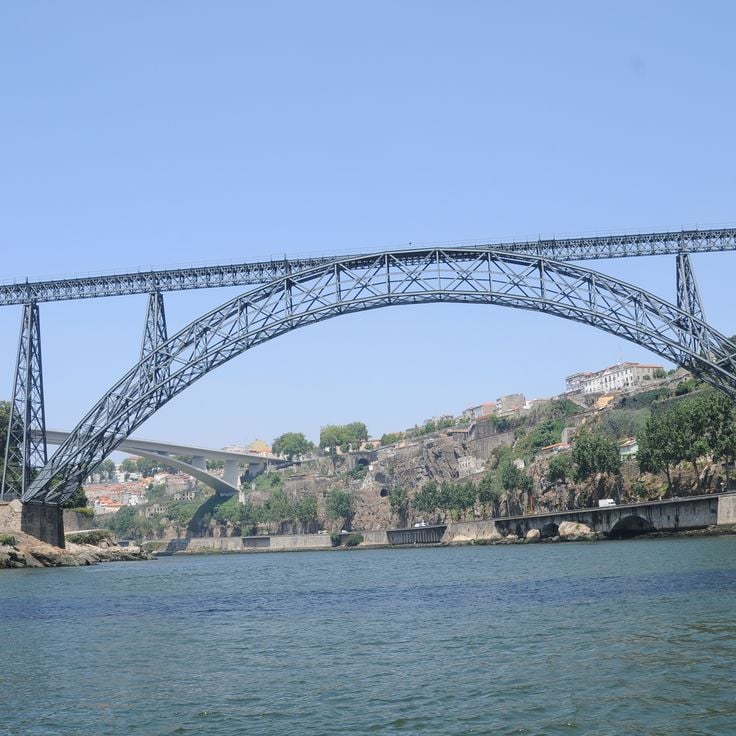
Porto, Portugal
The Maria Pia Bridge was built in 1877 by Gustave Eiffel's company for the Portuguese railway network. This railway bridge crosses the Douro River between Porto and Vila Nova de Gaia with a span of 353 meters at a height of 61 meters above the water. The structure features a parabolic metal arch that represented a significant engineering achievement at the time. The bridge remained in service until 1991, when it was replaced by the São João Bridge.
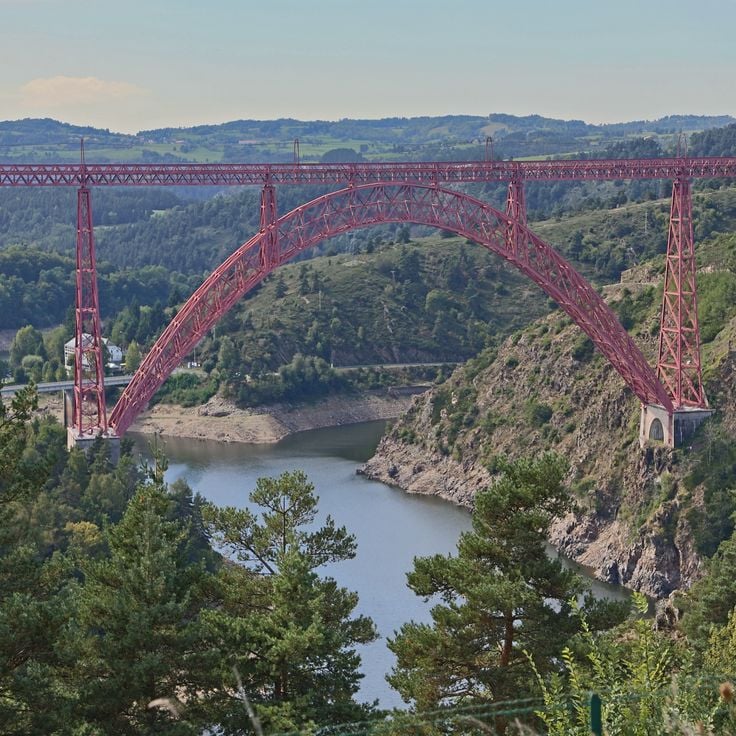
Auvergne, France
The Garabit Viaduct has spanned the Truyère River valley in the Cantal department since 1884. This railway bridge was designed by Gustave Eiffel and constructed by his company. The structure rises 122 meters above the river and features a central arch with a span of 165 meters. The viaduct connects the villages of Garabit and Ruynes-en-Margeride, enabling trains to cross the gorge on the railway line between Béziers and Neussargues.
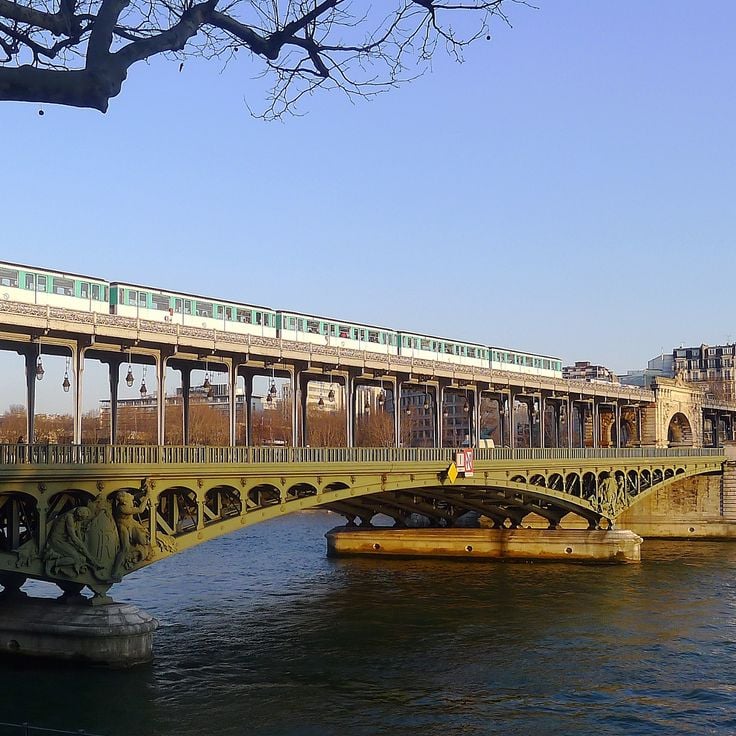
Paris, France
The Bir-Hakeim Bridge was constructed in 1905 and spans the Seine in Paris. This two-level metal structure carries the Metro Line 6 on its upper deck and road traffic on its lower deck. The parapets and supports are made of steel girders in the characteristic style of early engineering architecture. The bridge connects the 15th and 16th arrondissements and provides pedestrians with direct access to the Île aux Cygnes.
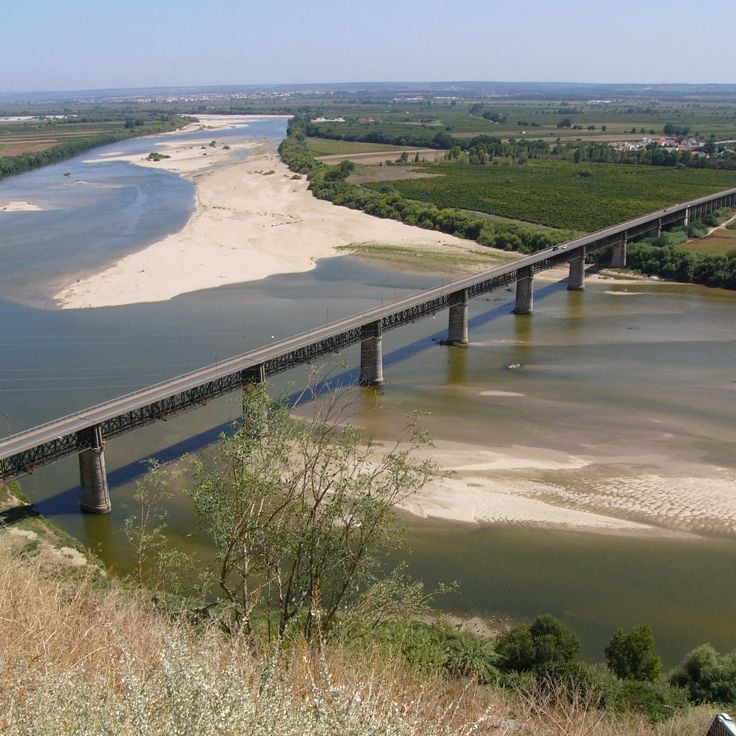
Porto, Portugal
The Douro Bridge was built in 1886 in Porto and connects both banks of the Douro River. This metal structure features two levels: the upper deck carries a roadway while the lower deck supports a railway line. The main arch spans 172 meters and was one of the longest metal arches in the world at the time of completion. The bridge was designed by Théophile Seyrig, an engineer from Gustave Eiffel's office.
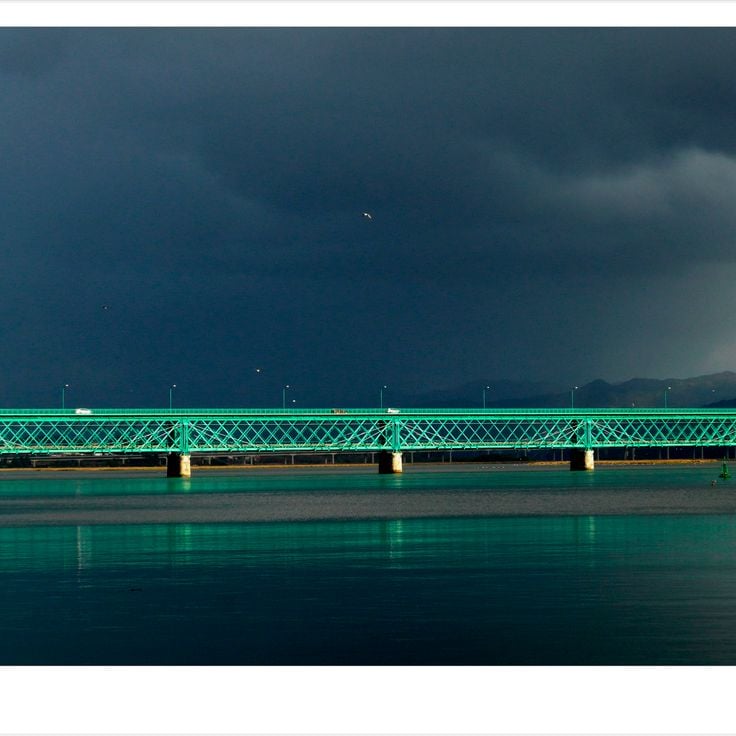
Viana do Castelo, Portugal
The Viana do Castelo Bridge was built in 1878 using steel and spans 563 meters to connect the two banks of the Lima River. This construction belongs to the family of Eiffel metal bridges and facilitates traffic between opposite sides of the city. The bridge serves as an important transport link in the Norte region of Portugal.
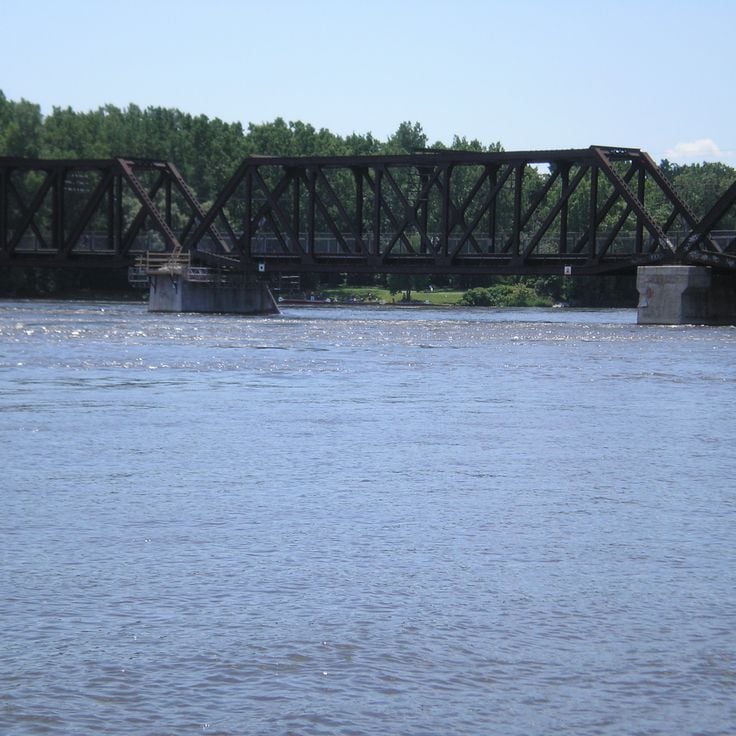
Bordeaux, France
The Bordeaux Railway Bridge was completed in 1858 and connects both banks of the Garonne in the center of Bordeaux. This railway bridge enables train traffic between the left and right riverbanks and represents an important transportation link for regional and interregional rail services. The metal construction is among the early engineering structures of the 19th century in France.

Nouvelle-Aquitaine, France
The Cubzac-les-Ponts Bridge was built in 1883 and spans the Dordogne River with five large steel arches. This road bridge connects both banks of the river and enables traffic between communities in the region. The structure belongs to the technical heritage of 19th-century French metalwork and continues to serve road traffic in Nouvelle-Aquitaine today.
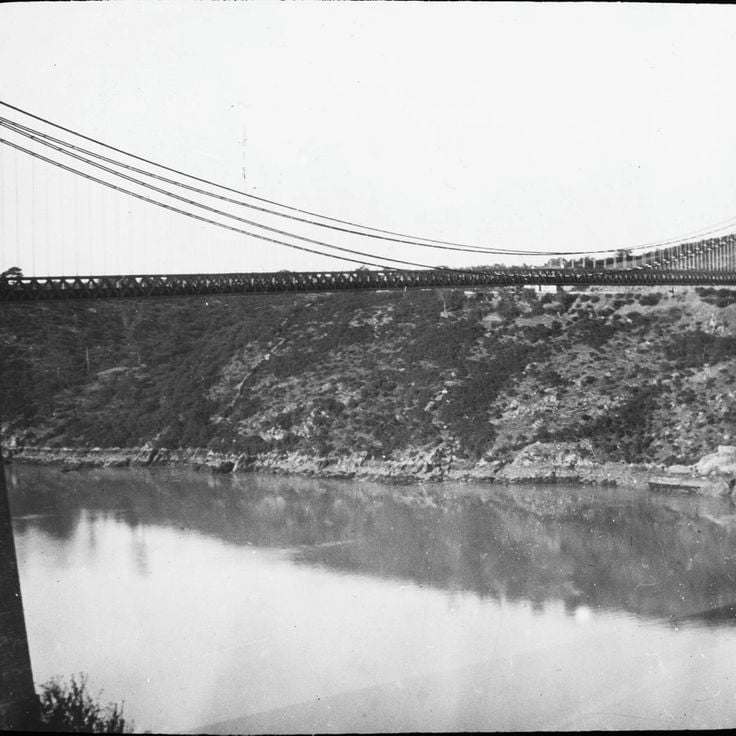
Brittany, France
The La Roche-Bernard Bridge has connected both banks of the Vilaine River in Brittany since 1872. This steel structure, measuring 198 meters in length, was designed by the Eiffel company and allows traffic to cross the river at a height that also permits navigation below. The bridge represents a significant example of 19th-century engineering.
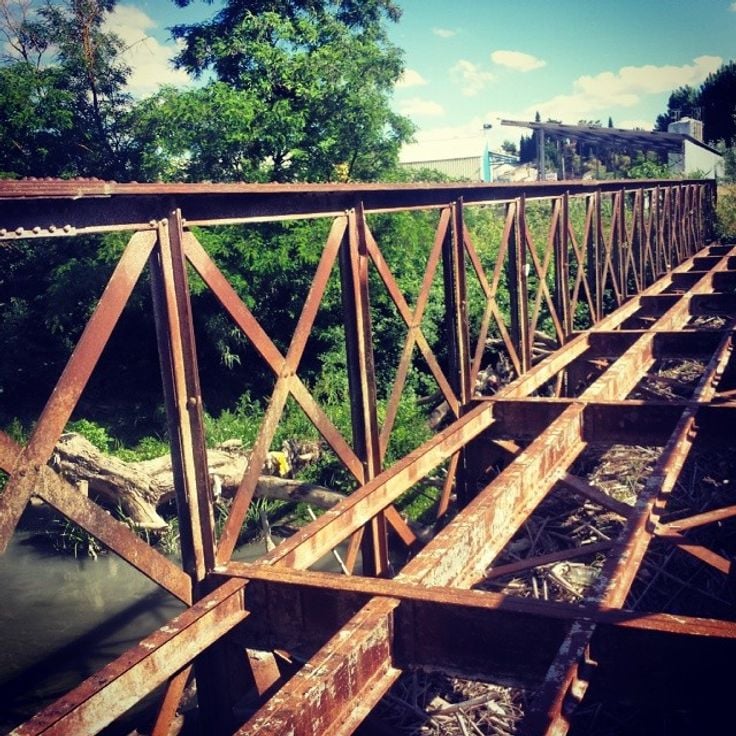
Zárate, Argentina
The Zárate Bridge was built in 1891 and crosses several branches of the Paraná River. This metal structure connects the mainland with the delta islands and allows rail traffic through this region. The construction has served freight and passenger transport between Buenos Aires and Entre Ríos provinces for over a century.
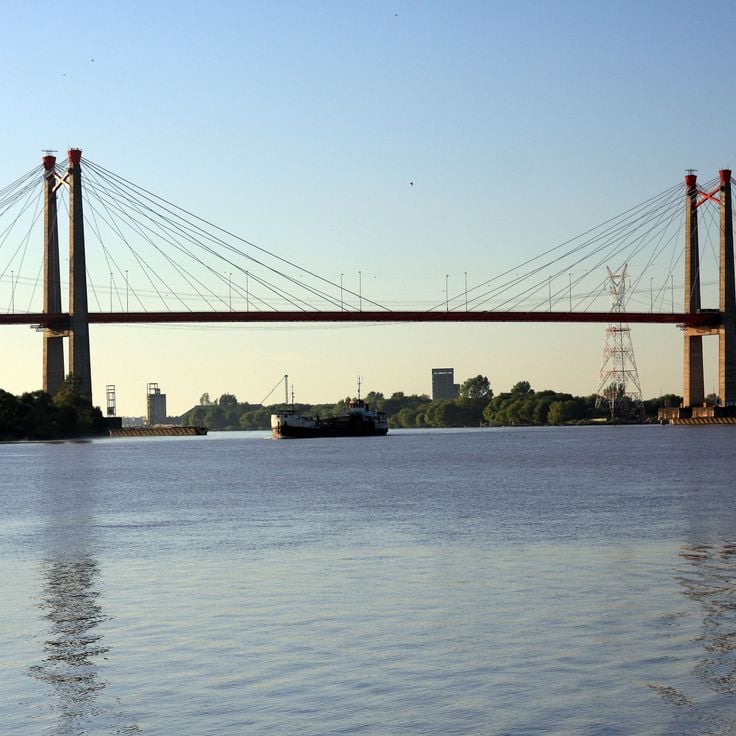
Buenos Aires Province, Argentina
The Mitre Viaduct is a steel structure from 1889 that forms part of the Mitre railway line. This railway bridge spans several urban streets in Buenos Aires Province and represents an important infrastructure connection in the Argentine transport network. The metal construction dates from the late industrial period of the 19th century.
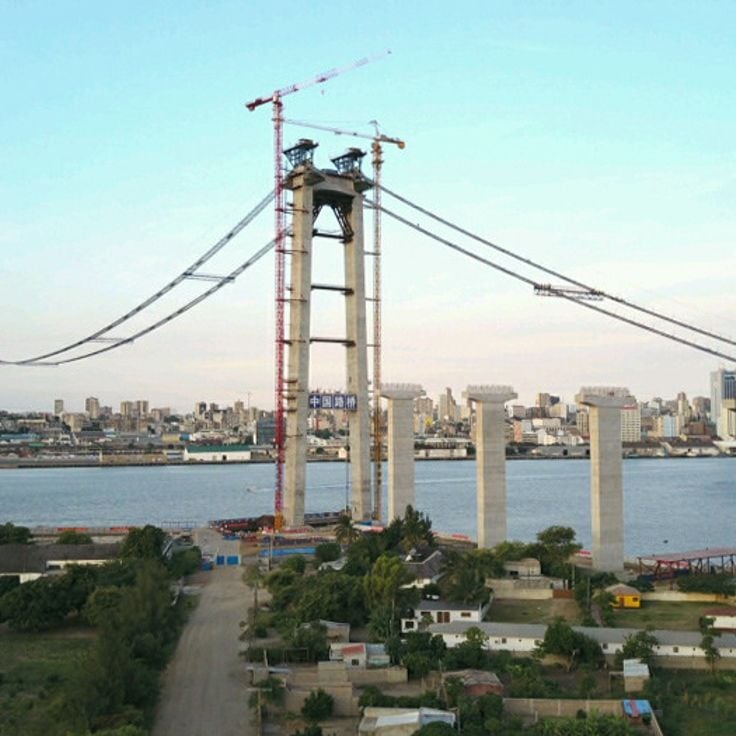
Maputo, Mozambique
The Maputo-Catembe Bridge links the Mozambican capital to the Catembe peninsula across Maputo Bay. This suspension bridge was inaugurated in 2018 and spans 3 kilometres. The Eiffel engineering office provided technical consultation for this infrastructure project, which has significantly improved transport connections between both shores.
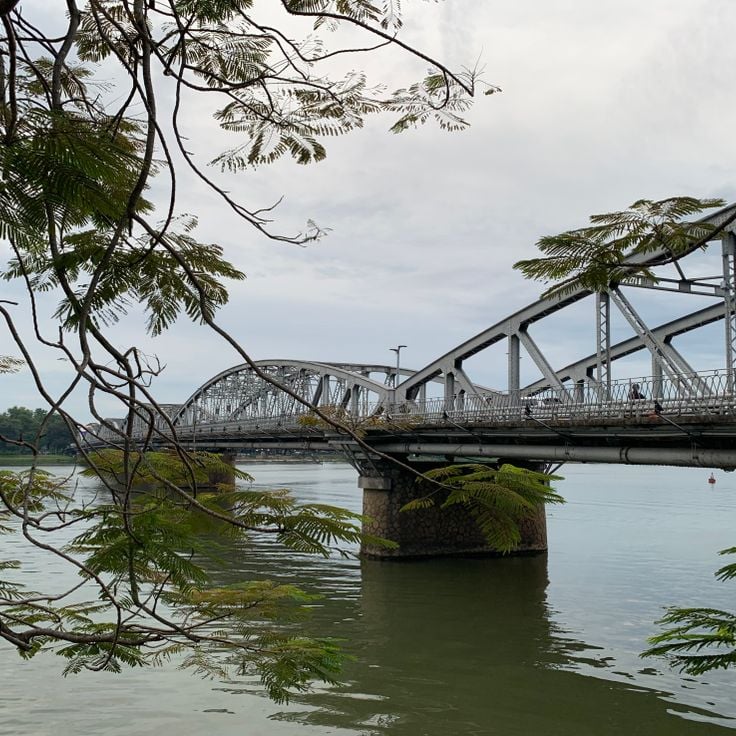
Huế, Vietnam
Truong Tien Bridge has connected both banks of the Perfume River in Huế since 1899. This six-arch steel structure was designed by the Eiffel construction office in Paris and ranks among Vietnam's first modern bridges. The bridge serves as an important traffic link in the city and provides access between the northern and southern parts of Huế.
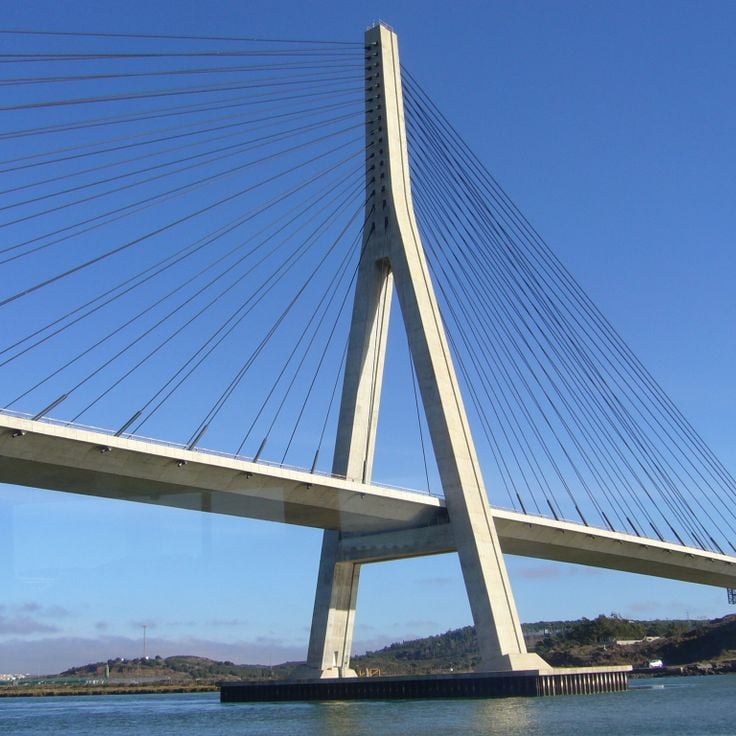
Ayamonte, Spain - Castro Marim, Portugal
The Guadiana International Bridge has connected the Spanish town of Ayamonte with the Portuguese municipality of Castro Marim across the Guadiana River since 1991. This metal bridge extends 666 meters and was designed following Gustave Eiffel's engineering principles. The structure enables road traffic between both countries and forms an important link between Spain's Huelva province and Portugal's Algarve region.
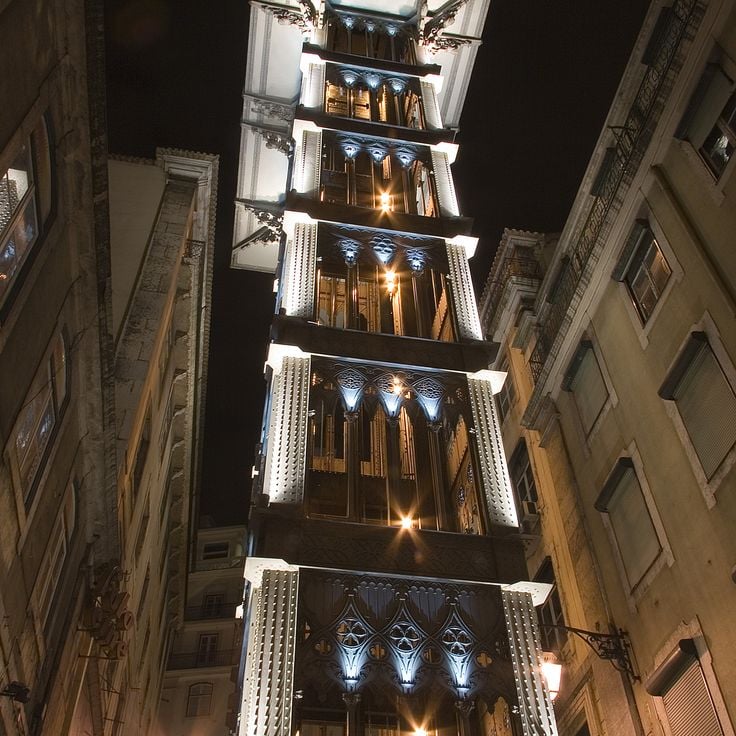
Lisbon, Portugal
The Santa Justa Lift was inaugurated in 1902 and connects the Baixa district with the elevated Chiado neighborhood. This elevator ascends 45 meters and transports passengers in a cast iron cabin. The construction exhibits characteristic features of Eiffel engineering techniques, including an exposed metal framework and neo-Gothic ornamental details. Raoul Mesnier du Ponsard, a student of Gustave Eiffel, designed this vertical transportation system, which was originally powered by steam.
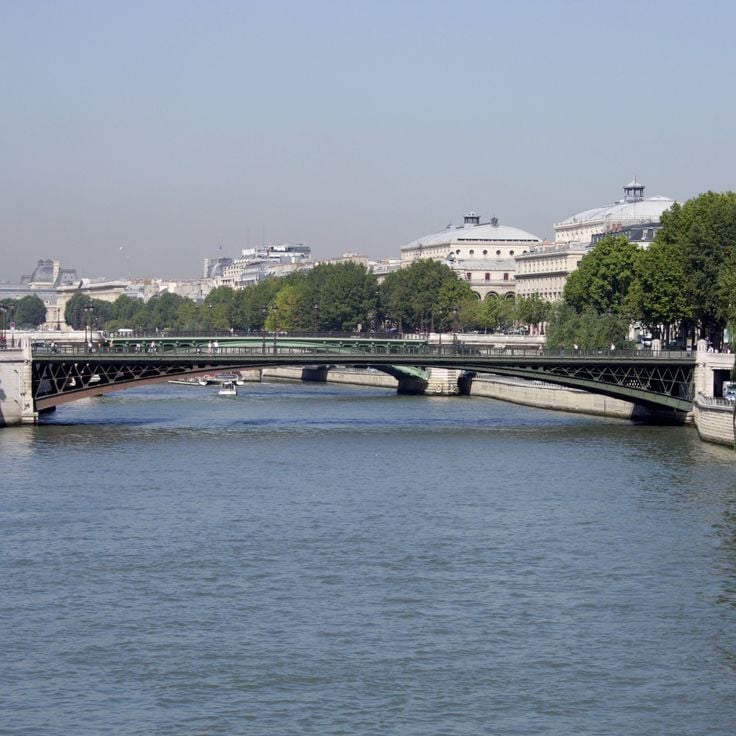
Paris, France
The Arcole Bridge connects the right bank of the Seine to Île de la Cité in Paris since 1856. This structure was built using metal and employed new construction techniques of that era. The bridge demonstrates early engineering methods that would later be applied to larger projects such as the Eiffel Tower. The structure spans the Seine and serves as an important traffic connection in the historical center of the city.
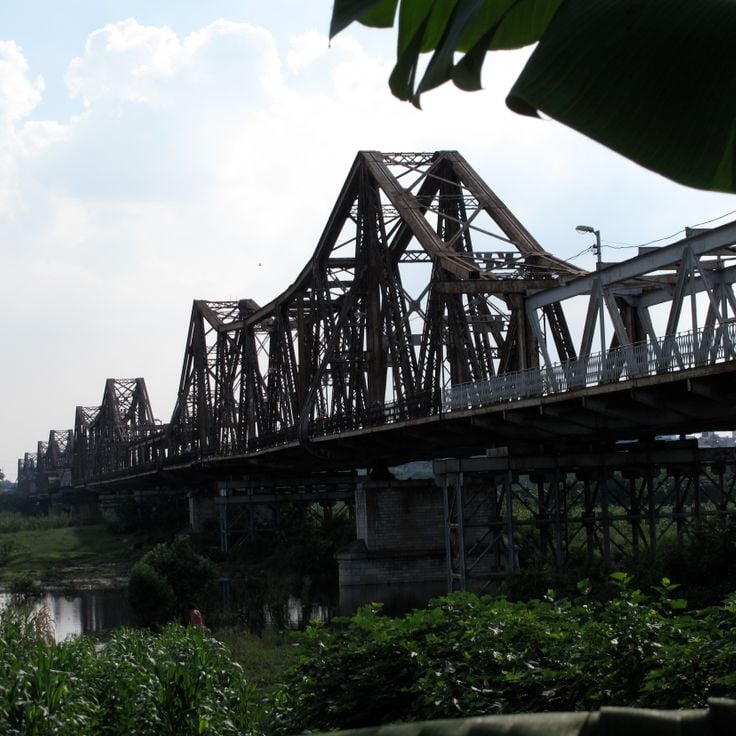
Hanoi, Vietnam
Long Bien Bridge connects the center of Hanoi with the eastern districts and spans the Red River for 2.4 kilometers. This railway bridge was completed in 1903 during the French colonial period. Gustave Eiffel provided technical consultation on the structural design of the bridge. The steel construction consists of multiple truss spans and originally served railway traffic as well as pedestrians and vehicles.

La Araucanía Region, Chile
The Viaducto del Malleco is a railway bridge that spans the Malleco River valley in the La Araucanía Region of Chile. The structure was designed by the Eiffel workshops and constructed between 1886 and 1890. Standing 102 meters above the river, it was among the tallest railway bridges in the world at the time of completion. The steel structure connects the towns of Collipulli and Curacautín, enabling trains to cross the deep gorge on the rail line between Santiago and Temuco.
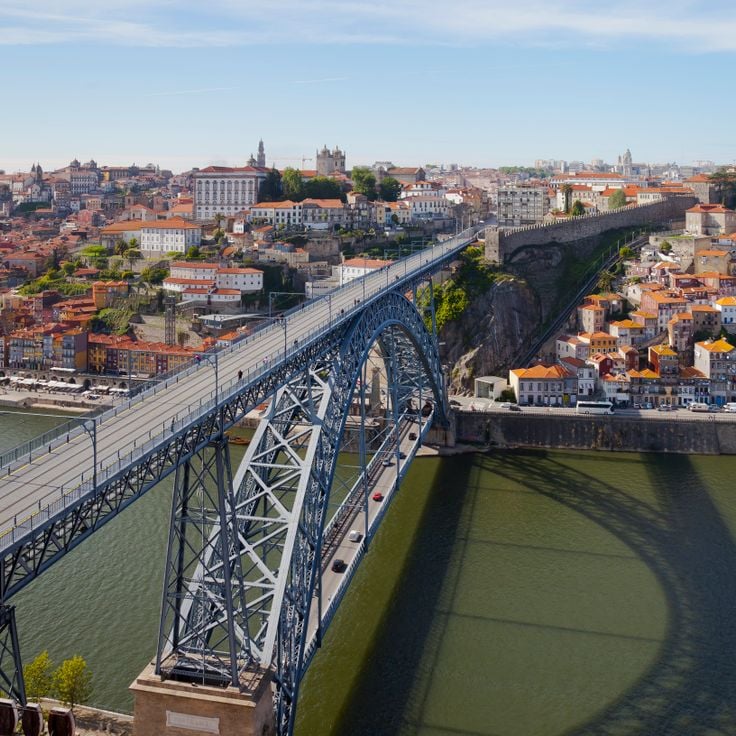
Porto, Portugal
The Ponte Dom Luís I connects Porto to Vila Nova de Gaia across the Douro River. This two-level metal arch bridge was built between 1881 and 1886 to designs by Théophile Seyrig, a former partner of Gustave Eiffel. The upper deck spans 395 meters and serves metro trains and pedestrians, while the lower deck accommodates road traffic. The central metal arch measures 172 meters in span.
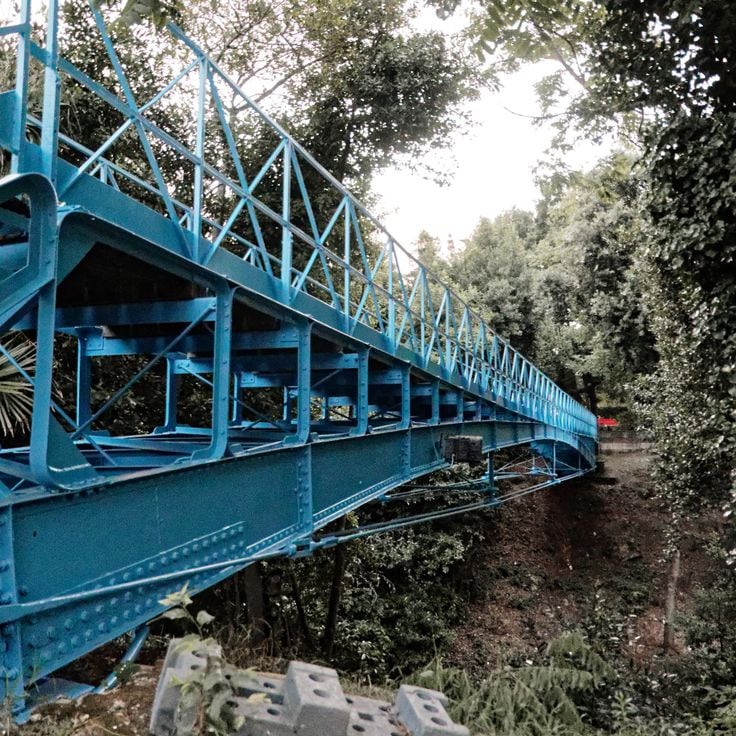
Lyon, France
The Passerelle Saint-Paul connects both banks of the Saône River in the historic center of Lyon. This metal structure was built in the late 19th century and serves exclusively pedestrian traffic. The footbridge provides direct access between the Vieux Lyon district on the western bank and the Presqu'île on the eastern bank. Its iron construction reflects the industrial architecture of that era and contributes to the city's architectural heritage.
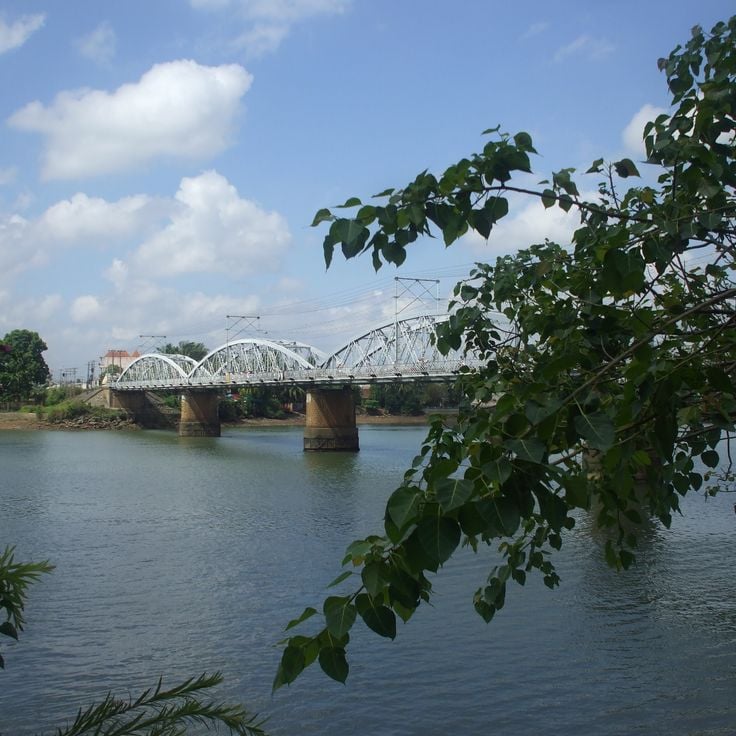
Dong Nai Province, Vietnam
The Ghenh Bridge spans the Dong Nai River in the province of the same name in southern Vietnam. This metal structure was designed by engineers working under the direction of Gustave Eiffel. The bridge represents an example of French engineering from the late 19th century and continues to connect both banks of the river. It belongs to the preserved metal bridges built according to the principles of the Eiffel workshops.
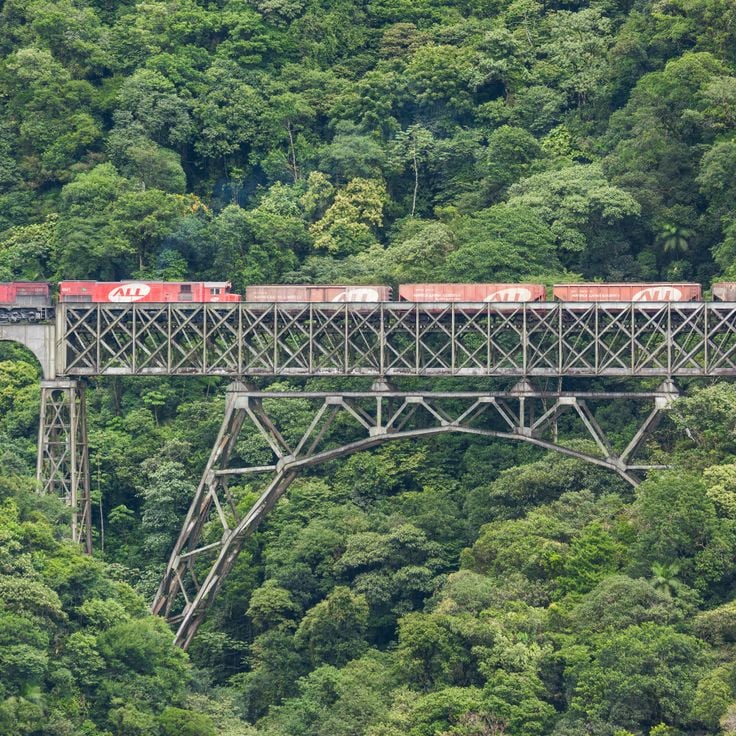
Porto, Portugal
The Ponte de São João is a railway bridge that crosses the Douro River on two levels. The structure extends 250 meters in length and was designed by Eiffel's engineering office. This metal bridge connects both banks of the river in Porto and serves railway traffic. The construction demonstrates characteristic features of 19th-century engineering with its double-deck steel structure.